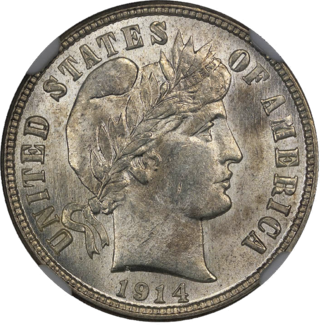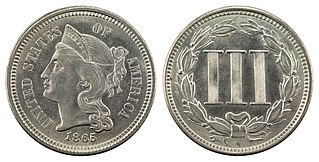
Coin folders are used as a coin storage method to protect coins from the elements.

Coin folders are used as a coin storage method to protect coins from the elements.
Protection for coins was historically only available to affluent collectors who stored their coins in custom cabinets. [1] The first attempt at creating an album or folder like structure for coins came in 1929, when The Beistle Company began marketing coin albums. These albums were made of heavy cardstock covered in paper on both sides, with cellophane to hold the coins in place, each page was hole-punched on the side to fit into a binder. [1] [2] Prohibitive costs meant that these were only available to confirmed collectors at the time. This changed when J.K. Post in collaboration with The Whitman Company invented the inexpensive coin board in 1934. [2] Coin boards were a huge success as they offered collectors of all types a way to store their coins inexpensively.
The modern day coin folder's invention is disputed by two major rivals. One take has that the folders were invented by R.S. Yeoman of The Whitman Company just before World War II. Yeoman took the old penny board design and simply folded over the portions to create a book (or folder). [3] The other take contends that the folders were devised and first sold by the Daniel Stamp Company (DANSCO) of Los Angeles in 1939 or early 1940. [4] In either case, this rivalry continues to the present day as both companies have made "high quality" folders for collectors since the 1940s. [3]
Creating a book for the coins offers some protection for the coins, and made storage easier as the folders are small in comparison to the former boards. [1] Coin folders have since become available to collectors worldwide with folders made specifically to fit the coins circulating in their respective countries.

A nickel, sometimes mistakenly called a nickle, is a five-cent coin struck by the United States Mint. Composed of cupronickel, the piece has been issued since 1866. Its diameter is 0.835 inches (21.21 mm) and its thickness is 0.077 inches (1.95 mm).

The United States Mint is a bureau of the Department of the Treasury responsible for producing coinage for the United States to conduct its trade and commerce, as well as controlling the movement of bullion. It does not produce paper money; that responsibility belongs to the Bureau of Engraving and Printing. The first United States Mint was created in Philadelphia in 1792, and soon joined by other centers, whose coins were identified by their own mint marks. There are currently four active coin-producing mints: Philadelphia, Denver, San Francisco, and West Point.

The two-cent piece was produced by the Mint of the United States for circulation from 1864 to 1872 and for collectors in 1873. Designed by James B. Longacre, there were decreasing mintages each year, as other minor coins such as the nickel proved more popular. It was abolished by the Mint Act of 1873.

The Liberty Head nickel, sometimes referred to as the V nickel because of its reverse design, is an American five-cent piece. It was struck for circulation from 1883 until 1912, with at least five pieces being surreptitiously struck dated 1913. The obverse features a left-facing image of the goddess of Liberty.
Below are the mintage figures for the United States cent.

A pattern coin is a coin which has not been approved for release, but produced to evaluate a proposed coin design. They are often off-metal strike, to proof standard or piedforts. Many coin collectors collect and study pattern coins because of their historical importance. Many of the world's most valuable coins are pattern coins; nearly 25 of the pieces listed in 100 Greatest US Coins are pattern coins.

The Indian Head cent, also known as an Indian Head penny, was a one-cent coin ($0.01) produced by the United States Bureau of the Mint from 1859 to 1909. It was designed by James Barton Longacre, the Chief Engraver at the Philadelphia Mint.

The United States large cent was a coin with a face value of 1/100 of a United States dollar. Its nominal diameter was 11⁄8 inch (28.57 mm). The first official mintage of the large cent was in 1793, and its production continued until 1857, when it was officially replaced by the modern-size one-cent coin.

The Flying Eagle cent is a one-cent piece struck by the Mint of the United States as a pattern coin in 1856 and for circulation in 1857 and 1858. The coin was designed by Mint Chief Engraver James B. Longacre, with the eagle in flight based on the work of Longacre's predecessor, Christian Gobrecht.
Richard Sperry Yeoman was an American commercial artist and coin collector who marketed coin display boards for Whitman Publishing. Hired by that company in 1932, he redesigned the boards in 1940 to the fold-out model that is currently sold.

The Shield nickel was the first United States five-cent piece to be made out of copper-nickel, the same alloy of which American nickels are struck today. Designed by James B. Longacre, the coin was issued from 1866 until 1883, when it was replaced by the Liberty Head nickel. The coin takes its name from the motif on its obverse, and was the first five-cent coin referred to as a "nickel"—silver pieces of that denomination had been known as half dimes.

The Barber coinage consists of a dime, quarter, and half dollar designed by United States Bureau of the Mint Chief Engraver Charles E. Barber. They were minted between 1892 and 1916, though no half dollars were struck in the final year of the series.

The three-dollar piece was a gold coin produced by the United States Bureau of the Mint from 1854 to 1889. Authorized by the Act of February 21, 1853, the coin was designed by Mint Chief Engraver James B. Longacre. The obverse bears a representation of Lady Liberty wearing a headdress of a Native American princess and the reverse a wreath of corn, wheat, cotton, and tobacco.
United States coinage type set is a visual collection of each of the types of coins produced by the US Mints. A "Type set" collection is enjoyed by some collectors of coins who try to collect one example of as many types of coins as they can.

Kenneth Edward Bressett is an American numismatist. He has actively promoted the study and hobby of numismatics for over 50 years. His published works on the subject cover a wide range of topics and extend from short articles to standard reference books on such diverse areas as ancient coins, paper money, British coins and United States coins.

The copper-nickel three-cent piece, often called a three-cent nickel piece or three-cent nickel, was designed by US Mint Chief Engraver James B. Longacre and struck by the United States Bureau of the Mint from 1865 to 1889. It was initially popular, but its place in commerce was supplanted by the five-cent piece, or nickel.
The Bank of New York Hoard is the name given to identify a treasure trove of several thousand Fugio Cents that were discovered at the bank. Sometime in 1788, a keg of Fugio cents was acquired by the bank and stored in the basement. The coins were forgotten about until they were rediscovered in 1856, this time at the bank's current location. At that time the coins were placed in cotton bags and put away until a final rediscovery of the coins was made in 1926. The coins were then given out as souvenirs and keepsakes to clients until 1948 when the American Numismatic Society examined the remaining 1,641 coins. Several of the coins were donated to the society while others were sold to collectors. All of the coins found were in mint state condition, most with brown toning. The find was important to collectors who wished to obtain a mint state example of the coin.

The Roosevelt dime is the current dime, or ten-cent piece, of the United States. Struck by the United States Mint continuously since 1946, it displays President Franklin D. Roosevelt on the obverse and was authorized soon after his death in 1945.

Coin cleaning is the process of removing undesirable substances from a coin's surface in order to make it more attractive to potential buyers. The subject is disputed among the numismatic community whether cleaning coins is necessary. Those that argue in favor of cleaning are also in dispute on which methods work best. It was once common practice to clean coins as the method was recommended by experts in the field. Solutions from pencil erasers to wire brushes and potassium cyanide were all used as cleaning agents with the goal to make the coin look brilliant again. When certified grading came into use in the mid 1980s though, the practice of cleaning coins diminished over time. Most coin experts have since come out against cleaning coins, as doing so can negatively affect them both in grade and value. If a potentially valuable coin must be cleaned then professional work is recommended. Commonly found coins are mentioned as ideal candidates for any attempted cleaning experiments.

A coin collecting board is intended for coin collectors to assemble a complete set of dates and mints for a particular coin series.